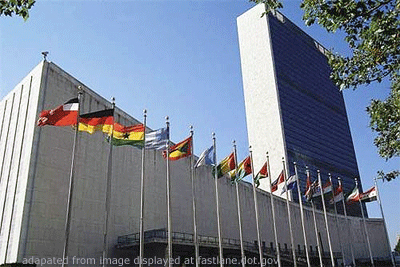UN Syrian peace plan deal: What was agreed upon in New York?

On Dec. 18 in New York, members of the International Syria Support Group agreed on the principles of reaching a political settlement to the crisis in Syria. Later, after five hours of discussions, the group’s decisions on Syria were unanimously adopted by the UN Security Council. But what questions are still hindering progress?
(Russia Beyond the Headlines – rbth.ru – ALEXEY TIMOFEYCHEV, RBTH – December 21, 2015)
What was discussed in New York?
A draft UN Security Council resolution on Syria. The document was initiated by the United States. The resolution was intended to confirm the decisions adopted earlier at the meetings in Vienna, where the sides had agreed a roadmap for resolving the Syrian crisis. The draft resolution was discussed during U.S. Secretary of State John Kerry’s visit to Moscow on Dec. 15. In the Russian capital, Kerry made the unexpected statement that the U.S. and its partners were no longer openly seeking to remove Syrian President Bashar al-Assad from power, a condition on which the U.S. had previously insisted upon. However, White House press secretary Josh Earnest soon clarified that Washington’s policy remains unchanged: Assad must go.
What was agreed?
At their meeting in New York, members of the so-called International Syria Support Group confirmed an earlier adopted decision that the authorities and the opposition in Syria should – in the course of six months – agree on forming a national unity government. In no later than 18 months’ time, Syria should hold elections under a new constitution that will have been adopted by then. Talks between the Syrian authorities and the opposition should start under the auspices of the UN in January 2016. As soon as an agreement on forming a coalition government is formed, the sides should stop hostilities.
What questions remain unresolved?
The sides have still not agreed on a definitive list of terrorist groups currently present in Syria. Jordan, as was decided at the meeting in Vienna on Nov. 14, has compiled a list of such groups, which according to media reports, comprises some 160 organizations. However, not all parties have agreed with this list. So far, the members of the International Syria Support Group unanimously agree only on two names on the draft list: Islamic State (ISIS) and the Al-Nusra Front. Also, there is still no clarity as to who will represent the Syrian opposition at the talks. This list has not yet been finalized either. Participants in the New York meeting also failed to reach an agreement on the thorniest issue of all, that of Bashar al-Assad’s political future. According to John Kerry, “obstacles and sharp differences remain within the international community, especially about the future of President Assad.” At the same time, the adopted resolution says that “the Syrian people will decide the future” of their country. According to Russian Foreign Minister Sergei Lavrov, “this is a clear answer to attempts to impose on Syrians solutions to any questions, including the question on the future of their president.”
What is Russia’s position?
At his annual news conference on Dec. 17, Russian President Vladimir Putin said that Moscow “generally agreed with” the draft resolution prepared by the U.S. “I think Syrian officials, having studied the draft, will agree with it, too, although there may be something that somebody does not like. In an attempt to resolve a conflict that lasts many years, a bloody conflict, there is always room for compromise, but concessions should be made on both sides,” said Putin. For Russia, in addition to the political settlement as such, another aspect of the Syrian crisis is also important, that of uniting efforts in the fight against terrorism. Commenting on the adopted resolution, Lavrov said that the voting at the UN “should pave the way to forming a broad anti-terror front on the basis of the UN Charter and relying on all those who are fighting terror on the ground, including the Syrian army, Kurdish militias, and armed groups of the patriotic Syrian opposition.” He said the Russian military operation in Syria was a contribution to that fight.
Who took part in the meeting in New York?
The talks were attended by representatives of Russia, the U.S., the UN, France, the UK, Germany, Jordan, Saudi Arabia, Turkey, and Iran, as well as the EU, the Arab League, and the Organization of Islamic Cooperation.
When will the next meeting of the Syria Support Group be held?
According to Lavrov, members of the group are planning to convene for the next round in January. By then, it is expected, the list of opposition representatives to attend the intra-Syrian talks will have been compiled.
Article also appeared at rbth.com/international/2015/12/21/un-syrian-peace-plan-deal-what-was-agreed-upon-in-new-york_553219
